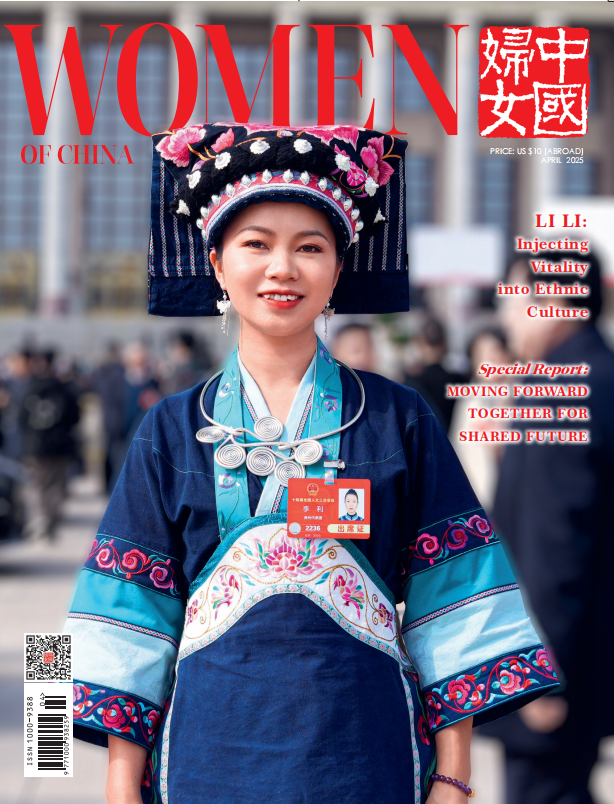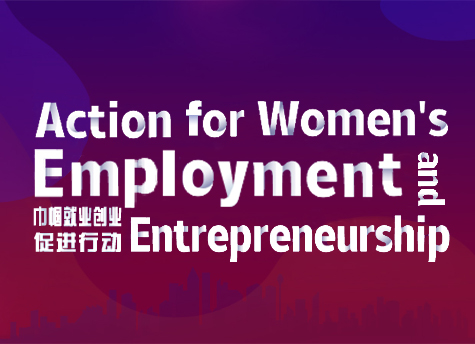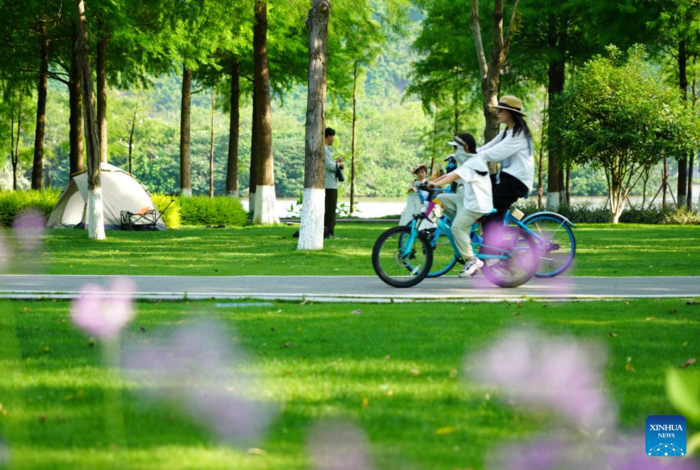My Chinese Heart | Covering Africa, Telling China's Story

Editor's Note:
Last September, as millions of animals migrated from Tanzania's Serengeti to Kenya's Masai Mara, in pursuit of water and fresh grass, Chen Yanhua, with curiosity and a longing for Africa, embarked on a journey from Beijing to Nairobi, to start a six-month internship at China Media Group (CMG) Africa. Nairobi greeted Chen with its warm spring breeze, blooming jacarandas, and corn-roasting stalls. The city stimulated her senses, and everything together reminded her of her hometown, Kunming (in southwest China's Yunnan Province), which is known in China as the "Spring City." Such familiar elements instantly bridged the gap between Chen and the East African city. From her arrival, she immersed herself in her efforts to understand Africa, through careful observations and engaging with locals, striving to become a professional correspondent, reporting on Africa, and an active storyteller at the forefront of international communications, sharing China's stories. In this article, Chen writes about her experiences in Nairobi.

'Africa Is Where My Heart Is'
Why Africa? Many people have asked me this question. The answer is quite simple, and it can be summed up by a phrase I saw on a board in a coffee shop: "Africa is where my heart is."
During the late 1990s, numerous African entrepreneurs, who had been trading in Southeast Asia, relocated to Guangzhou, in south China's Guangdong Province. They settled and established businesses in various areas, such as Xiaobei and Sanyuanli. During my undergraduate studies in Guangzhou, I frequently encountered some of those businessmen on the streets, and I observed them at the airport, shipping boxes of goods. Those brief interactions offered me a glimpse into the trade relations between China and Africa, and they ignited my interest in learning about and understanding Africa, from its own perspective.

In late August 2022, I enrolled in the International Journalism and Communication master's program at Peking University. Guided by my advisor, and through various enriching courses, I systematically delved into African communication and development issues. With each book I read, every presentation I gave, and all the discussions I attended, I deepened my interest in the African continent, and in its diverse countries. This burgeoning curiosity led me to unhesitatingly apply for an internship in Kenya.
Fortunately, in July 2023, I passed the interview, conducted by China Scholarship Council, and I received a scholarship to intern at China Media Group's Africa headquarters. This opportunity has not been just a valuable practical experience, it has also been a chance for me to improve my understanding of Africa, by living and working on the ground.
After having ventured into Africa, and having fallen in love with it, my classmates and I created a vlog, which won first prize in the Second China-Africa Youth Short Video Competition. The short film, titled "Into Africa," revolves around the "primal," "mysterious" and "underdeveloped," terms often used to describe Africa. It seeks to break such stereotypical narratives by showcasing Africa, through the eyes of Chinese youth, and presenting a real, vibrant and dynamic continent to the viewers.

Discovering China-Africa Friendship, Along the Railway
As an overseas journalist on an internship, introducing the China-Africa friendship to my viewers was a significant mission. From the late 19th century to the 21st century, and from Uganda Railway to Mombasa-Nairobi Standard Gauge Railway (SGR), railways have connected Kenya's colonial history with its present. Hence, I decided to use the railway, an anchor point in my understanding of Kenya, to share the stories of China-Africa cooperation that I encountered in urban and rural Kenya.
In 1896, the British began constructing the Uganda Railway, in Mombasa. Under harsh conditions, an average of four Indian laborers died for every mile of track laid. When I arrived in Mombasa, 128 years later, the heat persisted, but the exploitation was long gone.
Mombasa boasts rich marine resources, but, due to outdated fishing techniques, the resources have not effectively translated into economic power. A few years ago, the establishment of a primary processing base, by Chinese company Jinzai Foods, marked a significant turning point. By introducing advanced production concepts, processes and technologies, from China and other countries, Jinzai Foods has driven development of the local blue economy.

In 1899, Uganda Railway extended northwest, from the southeastern coast, to reach Nairobi. At that time, Nairobi was used by Maasai herders as a watering hole. Shortly thereafter, and due largely to its elevation and mild climate, Nairobi was chosen to be the headquarters of Uganda Railway. Construction of the railway town transformed the fate of the swampy area, and it gradually developed into East Africa's largest city.
I spent most of my time living in Nairobi during my internship in Kenya. In Nairobi, the skyline is adorned with towering buildings, and the efficient road network is often awe-inspiring. Behind the remarkable infrastructure are Chinese construction companies, which are deeply involved in Africa. For instance, during the past 20 years, China Wuyi has completed 38 road projects in Kenya, covering nearly 1,800 kilometers, and those projects have effectively promoted the construction of Kenya's basic road network, and in turn have driven economic and social development along the routes.
By 1900, Uganda Railway had reached Nakuru, 146 kilometers from Nairobi. Nakuru is famous for its flamingos, but what impressed me most was a Chinese company, Kaishan Group, which was helping Kenya build a geothermal power project in the Great Rift Valley. Power shortages are a major obstacle to economic development in many African countries. Even in relatively developed Kenya, the electrification rate in 2021 was only 76.54 percent. In an environment where universal electricity access has not been achieved, I experienced power outages in meeting rooms, canteens and gyms. During such times, the locals humorously told me, "This is Africa."
Bridging the power gap is a development necessity. My experiences while traveling along unpaved, sand-covered roads to interview staff members of Kaishan Group revealed many Chinese companies are spearheading the development of local water, solar and other renewable-energy projects, and they are using Chinese technology to help Africa achieve green and sustainable development goals.
On December 19, 1901, Uganda Railway was completed, in Kisumu, Kenya, without extending into Uganda. Entering the new century, Uganda Railway could no longer meet transportation demands. On June 1, 2017, the Mombasa-Nairobi SGR, a flagship project under the Belt and Road Initiative, officially commenced passenger service, marking a new era in Kenya's railway network.
In January, I visited China Road and Bridge Corporation, builder of SGR. Two Kenyan students, who had studied railway management at Beijing Jiaotong University, told me, "Chinese companies have not only transferred advanced technology to Africa, providing us with convenient and comfortable travel options and boosting Kenya's economic development, but have also trained a large number of management professionals for Kenya's railway industry, enhancing Kenya's capacity for self-sustained development."
I believe these Chinese companies, deeply rooted in Kenya, are like threads in a vast tapestry of China-Africa cooperation, weaving together a rich and enduring narrative of friendship and collaboration.

Making Friends, Through Shared Emotions
Telling China's story has been the guiding principle of my work and life in Kenya. Communication and dialogue are the main pathways through which I have strived to achieve this goal. During my internship, I participated in various media activities aimed at diverse audiences, including African youth, children and UN officials. These activities, such as "Twinkle Star" Animation Exhibition Tour and Prelude to Spring Festival Gala, utilized comics, the Spring Festival gala and temple fairs to promote Chinese culture to the overseas audiences. And the audiences deeply inspired me.
During the "Twinkle Star" Animation Exhibition Tour, I was responsible for hosting a journalist from Nigeria. During one of our conversations, he highly praised the significance and value of the animation screening, and he expressed a strong desire for Chinese media to promote the event in Nigeria. Through this interaction, I became acutely aware of the role and mission overseas media play in cultural exchanges.

Beyond in-depth discussions with interviewees and colleagues, I also enjoyed engaging with locals, especially during my leisure time. Whether I was walking along the streets and alleys, or visiting museums, archives, flea markets or parks, I liked to chat with Uber drivers, vendors, university students and children. The conversations helped me understand the locals' genuine perceptions of China, and allowed me to present a more authentic and multidimensional China to them.
During countless conversations, I discovered my secret weapon — Swahili — was always very effective. Swahili is one of Kenya's official languages. A month after I arrived in Kenya, I began learning simple words and phrases on Duolingo (a language learning app) daily. Whenever I chatted with locals, I habitually started with a simple Swahili greeting, showing respect for their culture. They were often pleasantly surprised by this, which made them more willing to open up to me.
Through these chats, I met many interesting locals. While waiting for a car outside the United Nations office in Nairobi, I met a local man who had once operated a garment business in Guangzhou's Xiaobei area. When I met him, he was working as a security guard. When he mentioned "Xiaobei," our shared memories of that place connected us, and evoked a sense of "it's a small world."
I also encountered an Uber driver who spoke fluent Chinese, and who had performed acrobatics at Guangzhou's Chimelong. I also met a tour guide, who was learning Chinese on TikTok, and an employee of a Chinese enterprise in Kenya who spoke Mandarin with a Fujian (a province in southeastern China) accent. Meeting such individuals often brightened my day, and filled me with hope for China-Africa, people-to-people exchanges.
Lastly, I want to mention my good friend Leslie, a student from the Democratic Republic of the Congo, who was studying in Kenya. Our friendship began during a program recording. After exchanging contact information, my classmates and I invited her to our home to try hot pot, sharing delicious food from China with her. During our conversations, I was surprised to discover she had watched many recent Chinese dramas and classic Chinese movies. Through her, I saw the appeal of Chinese culture to young Africans. In our friendship, I also saw that young people of different races and nationalities can become good friends, based on shared emotions.
Photos from Chen Yanhua
(Women of China English Monthly August 2024)
Editor: Wang Shasha
Please understand that womenofchina.cn,a non-profit, information-communication website, cannot reach every writer before using articles and images. For copyright issues, please contact us by emailing: website@womenofchina.cn. The articles published and opinions expressed on this website represent the opinions of writers and are not necessarily shared by womenofchina.cn.








.jpg)

 WeChat
WeChat Weibo
Weibo 京公网安备 11010102004314号
京公网安备 11010102004314号